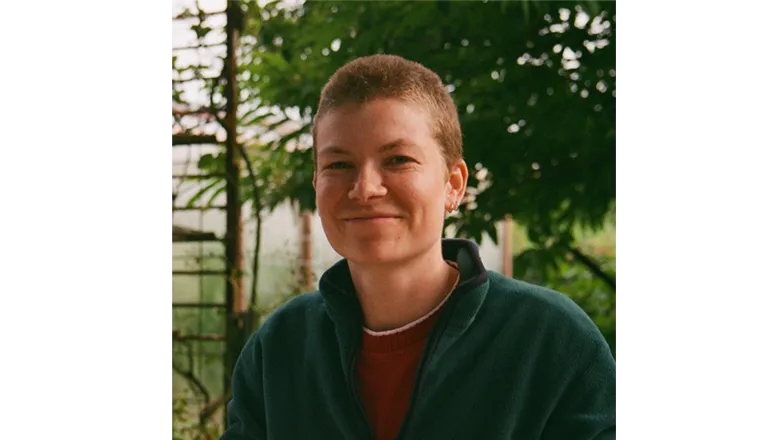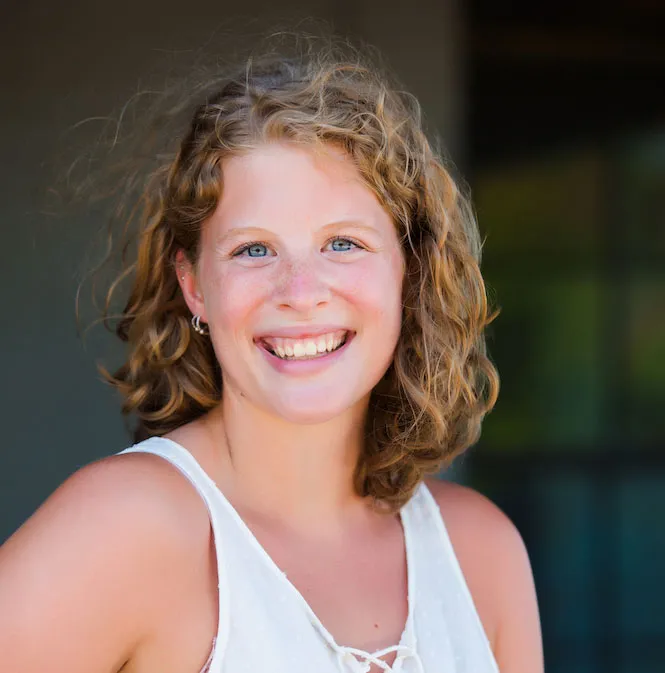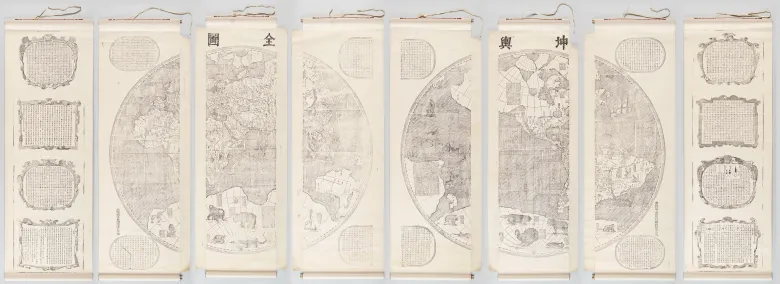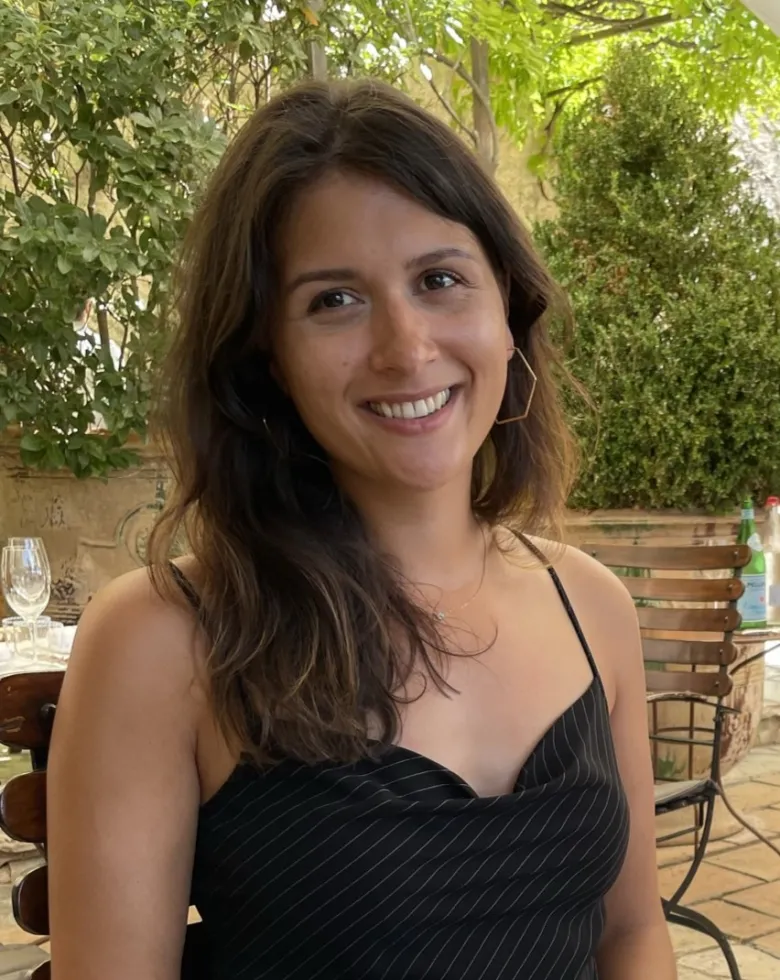The National Maritime Museum in Amsterdam stimulates research on objects in the museum collection with two fellowships. Read more about the research that fellows who started in 2022 conducted
Marie Keulen
Missionary travel writing and imperial culture
As of October 2022, I started as a Prof. J.C.M. Warnsinck Fellow with a research project on the European colonial imagination and representation of the overseas world in nineteenth-century missionary travel literature.

Marie Keulen
The maritime history of the Netherlands is characterized by the contacts and interactions of sailors, traders, travellers, and migrants with other peoples. Missionaries are also part of this history: they travelled around the world and encountered other territories and peoples. During these travels, they often wrote extensively about the contact and interactions they had with local populations. By writing travel accounts for a European readership they made an important contribution to the production of European knowledge about colonial territories and peoples.
The National Maritime Museum has many missionary travel accounts in its collections. Among them, there are several accounts from missionaries of the Dutch Missionary Society (Nederlandsch Zendeling Genootschap) who travelled to the Cape Colony in the nineteenth century. They aimed to spread Christianity among the local populations of the colony and bring ‘civilisation’ to what they perceived as heathen, primitive cultures. In the Cape Colony, the Dutch missionaries encountered local populations such as the Khoisan and wrote about these interactions in travel accounts for a Dutch public. By producing and publishing missionary travel literature for a Dutch audience, the Dutch Missionary Society sought to mobilize public support for its missionary activities.
In my research, I investigate how missionary writing contributed to imperial representation and ideology. I look at the missionary representations of the Cape Colony, the local Khoisan population, the Dutch and British colonial expansion, and the role of European missionaries in colonized territories. The central theme is the role of missionary travel literature in Dutch imperial culture. What worldview and self-image were proclaimed in the missionary travel literature? What role did the missionary travel literature play in legitimizing colonialism? And how did the spread of missionary travel writing contribute to the formation of a Dutch imperial public?
Charlotte Jarvis
Alcohol consumption of Dutch sailors
Over the last few months, I have been working as a Warnsinck Fellow, researching the consumption of alcohol by Dutch sailors. This research started as the subject of my master’s thesis at Texas A&M University, where I looked at genever drinking onboard Dutch vessels and compared it with rum and gin drinking on British vessels in the seventeenth, eighteenth, and nineteenth centuries. Quickly, I discovered that these sailors were drinking a lot! After I graduated, I moved to the Netherlands and began my research as a fellow. Now, I am looking only at Dutch sailors, and focusing on two aspects of alcohol at sea.

Charlotte Jarvis
The first aspect of the research is grounded in social history. Dutch landsmen, historically, criticised Dutch sailors for drinking too much and their bad behaviour. Additionally, other European and Asian nations criticised the Dutch as a whole for the same traits. I have been using historical documents, many of which can be found in Het Scheepvaartmuseum’s archives, to assess the validity of these judgements. Were Dutch sailors really drinking more than those on land, and were the Dutch as a nation, more alcoholic than others?
The short answer, is no. In the Early Modern Period, everyone was drinking heavily regardless of nationality or profession. It started with beer, but slowly stronger spirits became more popular. Generally, Dutch sailors were given fixed amounts of alcohol rations, distributed by an officer, at specific times. Throughout the seventeenth and eighteenth centuries, these amounts were largely unchanged: around 1.2 litres of (weaker than today’s) beer, 0.30 litres of wine, and 0.15 litres (sometimes called an oorlam) of spirits. The spirits and wine were issued for health reasons, like keeping scurvy away. The sailors could often bring their own supply (sometimes as much as 30 bottles of genever) onboard and officers were exempt from rations, so alcoholic drinking was heavy onboard.
But my research shows that Dutch soldiers had just as much alcohol given to them and on land, the per capita rate of drinking was 15-23 litres of spirits alone per person per year. And it was not just the Dutch who were the heavy drinkers. The British Royal Navy’s rum ration started at 0.25 litres of spirits a day, the Portuguese East India vessels had 1.4 litres of wine per day, the Danish had 1.5 to 1.7 litres of beer daily plus spirits, and the American Navy had 0.25 litres pf whiskey. I have published an article on this research in the Journal of Maritime history in the spring of 2023.
The second aspect of my research looks at the archaeology, the material culture, of genever specifically aboard Dutch vessels. As alcoholic drinks for the crew were transported differently than bottles that were used as merchandize, it is possible to reconstruct the nature of alcohol use on board. This article is published in Heritage in January 2023.
Zhifan Liu
Chinese world map Kunyu quantu of Ferdinand Verbiest from 1674
My fellowship project is a continuation of my research internship at Het Scheepvaartmuseum in 2020. During the fellowship I focused on the Flemish Jesuit Ferdinand Verbiest’s Chinese world map, Kunyu quantu (1674), in the museum’s collection. The National Maritime Museum in Amsterdam holds the only complete original copy in the Netherlands, but it was understudied and misinterpreted for decades. My research thus consists of two stages to help better understand the Verbiest map, specifically its production, provenance, and perception. My central question concerns the roles that the 1674 edition of Ferdinand Verbiest’s Kunyu quantu has played in the circulation of maritime knowledge between China and the Low Countries.

Zhifan Liu
The first stage of my research centers around the production of the map, precisely the making of the 14 (annotated) marine animal illustrations in China. I systematically organized the marine animal images, carefully analyzed the iconography, and translated the Chinese annotations on the map into English. Verbiest turned out to have a diverse range of sources to use, including European maps, atlases, books, and artworks that originated from different regions and dated from early sixteenth to mid-seventeenth century. Through different cultural filters, the illustrations of marine animals are hybrid in artistic and visual traditions because of the collaborations between Jesuits and Chinese artisans to fit in the socio-cultural contexts of Qing China. With the additional support of the Fellowships foundation, a translation could be made from Neo-Latin in Athanasius Kircher’s Magnes Sive De Arte Magnetica (Rome, 1654). The direct connection between the two Jesuits, Kircher and Verbiest, can be seen through their identical depiction of marine animals across materials. The Verbiest map is an important example of the way in which text and graphical work spread among the Jesuits, and how knowledge was shared within this community.
The second stage dives into the history of the map itself. What do we know about the provenance and perception of the copy at Het Scheepvaartmuseum in Amsterdam? This project stage has already resulted in an article in Zeemagazijn in 2021. Most importantly, I could reconstruct the various steps in the history of this map. Another interesting aspect is that it has long been regarded as a copy of the Dutch cartographer Joan Blaeu’s world map (1648). This fitted the wish to emphasize the importance of the ‘Golden Age’ of Dutch cartography.

Chinese wereldkaart Kunyu quantu van Ferdinand Verbiest uit 1674
Gwen Lemmers
Rescuing in the Wadden area in the eighteenth century
In December 2022 I started my research as Rien Meppelink Fellow. The purpose of this fellowship was to research the rescuing organizations in the Dutch Wadden area in the seventeenth and eighteenth century. I had already developed an interest in rescuing activities when I conducted research for my master’s thesis at Leiden University. In my thesis I focused on rescuing along the shores of the Dutch province of Holland from the seventeenth century onwards.

Gwen Lemmers
Research on rescuing organizations in the seventeenth and eighteenth century is not without challenges. Rescuing people only became an organized activity in the nineteenth century, when two private companies were founded. Researching the two centuries beforehand is difficult, in part because people focused on the recovery of goods rather than on rescuing people. The term ‘rescuing organizations’ is therefore not the most accurate description for the seventeenth and eighteenth century. In the period that I study, there were sporadic rescue activities rather than a structural deployment of people and materials towards this goal.
Because of the absence of organized rescuing companies, the information that I need for my research is very scattered across a variety of archives, and materials are not accessible to the same extent. For this fellowship I’m focusing on the rescue activities around the island of Texel in the eighteenth century. This choice is made because of the existence of the archive of the schout baljuw (sheriff) Balthasar Huijdecoper, who kept quite a complete archive relating to the offices he held on Texel from 1733 to 1769. This is a treasure trove for information regarding the way people dealt with shipwrecks, but it also includes lists of people who drowned and washed up on shore. I’m trying to identify the variety of people involved in a shipwreck, so it will be possible to look more specifically for archival material and rescuing events. The archive of Huijdecoper is a first entrance, after which I will consult notarial archives, newspaper databases, archives of pilots, the admiralty and the East India Company.
Questions that I hope to find answer to during this research are: how and by whom was help offered in case of a shipwreck, what happened to the people who died during the shipwreck, how were castaways and their relatives (financially) supported after a shipwreck, and which measures were taken to prevent shipwrecks.
Margaux Shraiman
Commercialising eden: an ecocritical reading of frans post’s drawings of the fortunate isles
On October 25, 1636, the newly appointed governor Count Johan Maurits van Nassau Siegen set sail for the new Brazilian colony on the flagship Zutphen. A fair amount is known about the route undertaken by the convoy, due to the sketchbook of coastal views by Frans Post now conserved in Het Scheepvaartmuseum. The earliest known works by the artist, these coastal views of the Canary Islands, Madeira, and Cape Verde are also among the few remaining drawings attributed to Frans Post still in existence today.
My research as a J.C.M. Warnsinck Fellow has centred around this album of coastal drawings. This project was the subject of my master’s thesis, which poses the question: to what extent do Frans Post’s coastal drawings reflect contemporary attitudes towards the environment in the seventeenth century Dutch Atlantic? The aims of the project are threefold: to conduct in depth object research on the sketchbook and to situate it within the painter’s larger oeuvre, in order to critically engage with the representation of nature in the drawings.
My project examines the drawings from an ecocritical perspective: I place the drawings in the context of broader attitudes towards the natural world, as well as the specific ecological development of the Atlantic islands. I explore how contemporary attitudes towards the environment shaped Post’s depiction of the Atlantic islands as a commercial utopia, as well as how his drawings reflect the environmental changes caused by colonial occupation.
Although there is a rich body of scholarship about Frans Post’s oeuvre, the coastal drawings themselves have received very little scholarly attention. My research endeavours to illuminate their significance by conducting in depth visual analysis of the drawings, and situating them within the larger oeuvre of the artist. I offer an innovative contribution by analysing the drawings from an ecocritical perspective for the first time, and paves the way for further study of the larger question of the representation of the Atlantic islands by other artists.
About the fellowships program
The Fellowships program is made possible in part thanks to the Collaborating Maritime Funds and the Association of the Dutch Historical Maritime Museum.